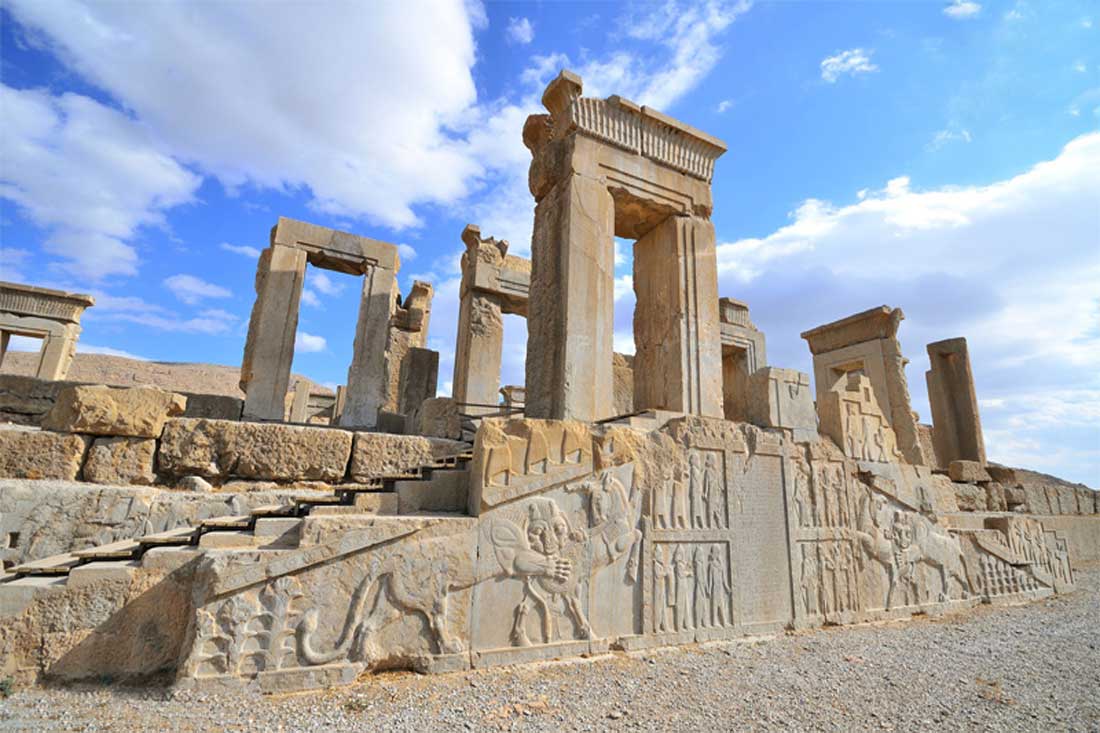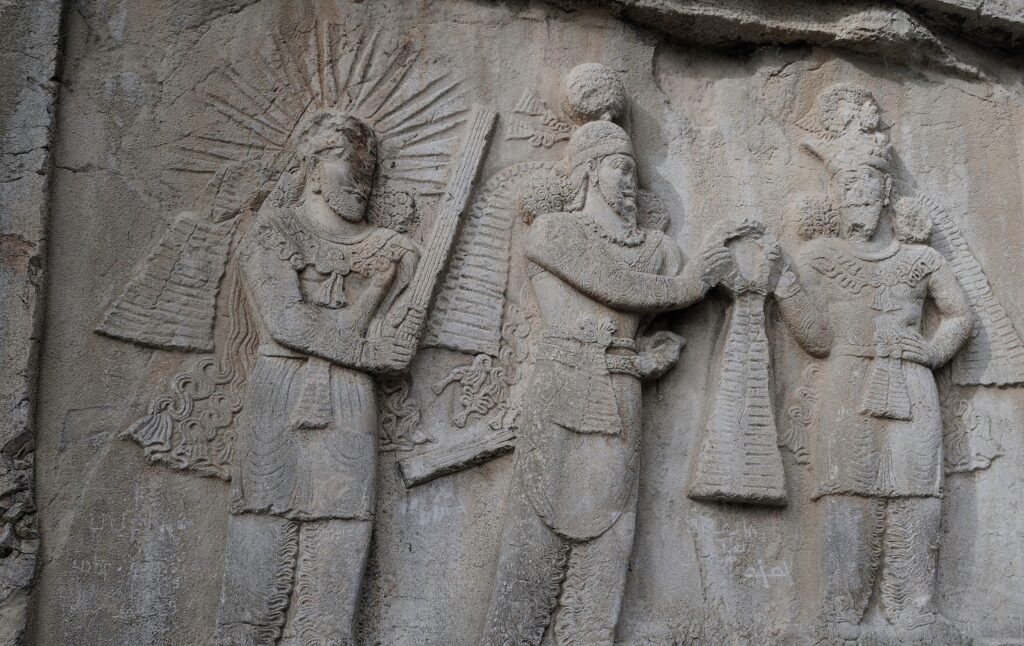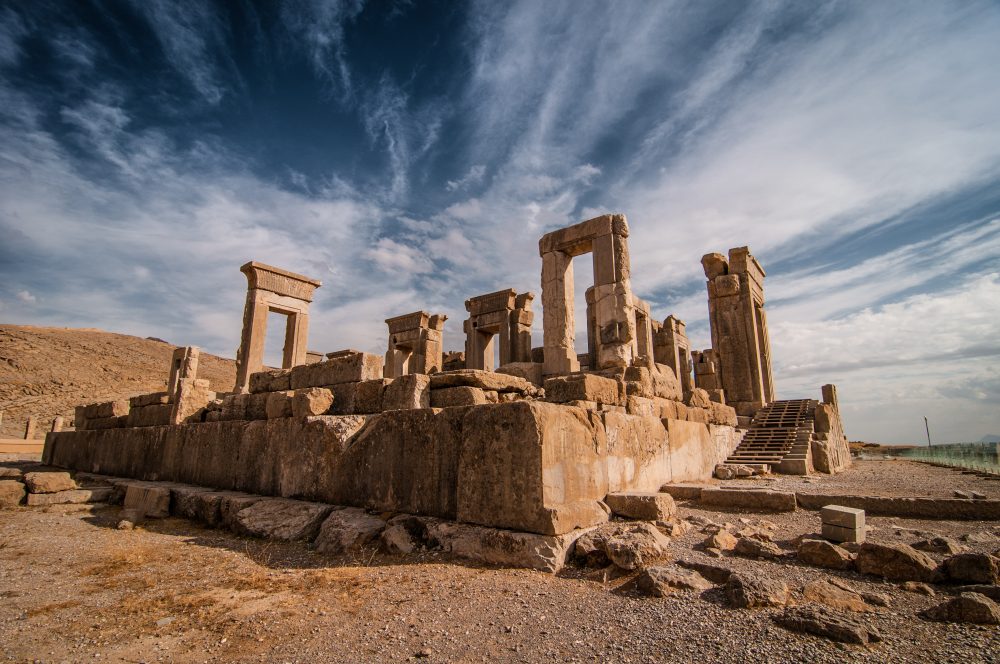“Glory Carved in Stone: The Enduring Legacy of Ancient Persian Art and Architecture”

Ancient Persian art and architecture represent one of the richest and most influential cultural legacies of the ancient world. Spanning multiple dynasties and millennia—from the Elamites to the Achaemenids, Parthians, and Sassanians—Persian artistic expression fused indigenous traditions with foreign influences, creating a distinct visual language that symbolized imperial power, spiritual devotion, and cultural sophistication. Its monumental architecture, elaborate stone carvings, metalwork, and textiles not only defined the aesthetics of ancient Iran but also inspired civilizations from Greece to India.
Origins and Early Influences
The foundations of Persian art can be traced to Elamite civilization (c. 2700–539 BCE) in southwestern Iran, which displayed advanced pottery, ziggurats, and cylinder seals. As Persia expanded through conquest and assimilation, it absorbed artistic traditions from Mesopotamia, Egypt, and later Hellenistic and Indian cultures.
By the time of the Achaemenid Empire (c. 550–330 BCE), Persian art and architecture had matured into a distinctive imperial style that reflected the grandeur and diversity of the empire.
Achaemenid Art and Architecture (c. 550–330 BCE)
The Achaemenid Empire, founded by Cyrus the Great, was the first to unify a vast territory stretching from the Indus River to the Mediterranean. Its capital cities—Pasargadae, Persepolis, and Susa—became architectural wonders.
Key Features:
- Persepolis: Commissioned by Darius I, Persepolis is the crown jewel of Persian architecture. The site features:
- Grand ceremonial staircases with low-relief carvings of tribute-bearing envoys from across the empire.
- Apadana (audience hall): A massive hypostyle hall with 72 columns, showcasing both scale and craftsmanship.
- Use of limestone and cedar wood, with detailed carvings portraying soldiers, animals, and religious motifs.
- Artistic Style:
- Symmetry, balance, and grand scale.
- Reliefs and friezes that depicted unity and order among diverse peoples.
- Use of gold and silver vessels, finely crafted jewelry, and ceremonial weapons.
- Cultural Fusion:
- Achaemenid art blended styles from Egypt, Assyria, and Greece, visible in both motifs and technique, reflecting Persia’s cosmopolitan nature.

Parthian Art and Architecture (247 BCE – 224 CE)
The Parthians introduced new architectural forms and continued Persia’s tradition of syncretism.
Notable Contributions:
- Iwans: Vaulted halls opening onto courtyards, a significant innovation that would later influence Islamic architecture.
- Greater emphasis on portraiture and frescoes, particularly in religious and funerary contexts.
- Sculptures with stylized features, frontal poses, and large, expressive eyes—suggesting a departure from earlier Hellenistic realism.
Sassanian Art and Architecture (224–651 CE)
The Sassanian Empire, often considered the last great Persian dynasty before the Islamic conquests, marked a cultural renaissance in Persian art and architecture.
Characteristics:
- Rock reliefs and royal carvings (e.g., at Naqsh-e Rustam and Taq-e Bostan) glorified kingship and divine rule.
- Domed palaces and monumental structures such as the Palace of Ardashir and the Taq Kasra (with one of the largest single-span brick arches in history).
- Decorative stucco, mosaics, and textiles, often rich in symbolism, featuring Zoroastrian themes, animals, and mythological creatures.
- Luxury items such as silver plates depicting hunting scenes became prized across Eurasia.
Symbolism and Spiritual Significance
Persian art often reflected religious beliefs, particularly Zoroastrianism, which emphasized the duality of good and evil, fire as a sacred element, and the divine right of kings. Royal iconography and divine symbolism were deeply intertwined, portraying rulers as chosen agents of Ahura Mazda, the supreme deity.
Animals like the griffin, lion, and bull symbolized strength and protection, while motifs like the winged disc signified divine favor and eternal power.
Legacy and Global Influence
The impact of ancient Persian art and architecture is far-reaching:
- Islamic architecture adopted Persian elements like domes, iwans, intricate geometric patterns, and garden layouts.
- Byzantine and Roman architects borrowed structural techniques and decorative styles.
- Persian luxury arts—textiles, metalwork, and ceramics—were widely traded and admired across Asia and Europe.
- Even in modern Iran, echoes of Achaemenid and Sassanian motifs continue in public monuments, calligraphy, and urban design.

Conclusion
Ancient Persian art and architecture were not just expressions of imperial wealth but powerful tools of cultural identity, diplomacy, and religious expression. Through a blend of native creativity and cross-cultural influence, Persia built an artistic heritage that endured the fall of empires and continues to shape the aesthetics and ideologies of the present. From the stone-carved terraces of Persepolis to the soaring vaults of the Taq Kasra, Persia’s ancient legacy remains a testament to a civilization that understood the power of beauty, order, and symbolism in shaping human history.




